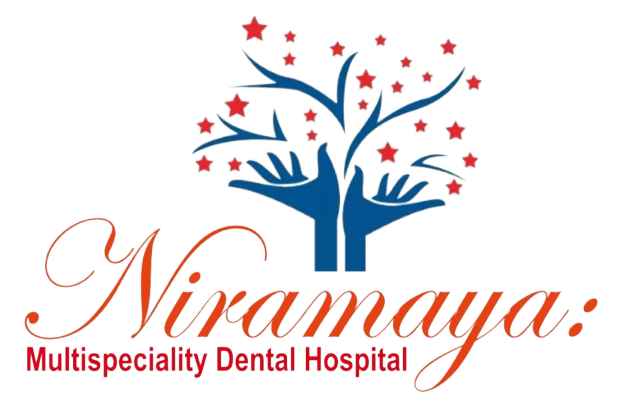Ask the Experts
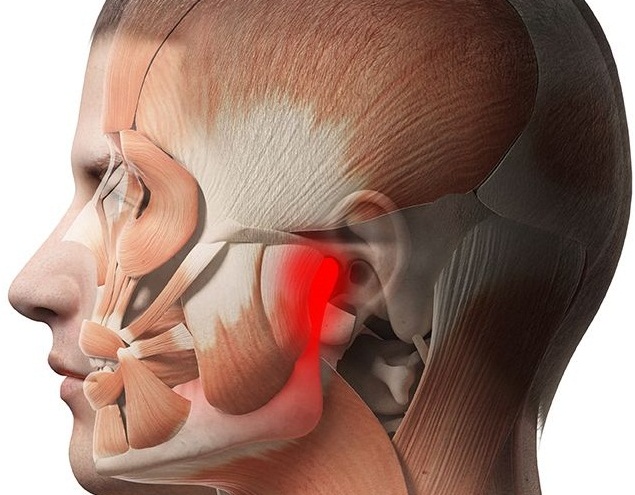
Temporomandibular joint (TMJ)
The temporomandibular acts like a sliding hinge, connecting your jawbone to your skull. You have one joint on each side of your jaw. TMJ disorders — a type of temporomandibular disorder or TMD — can cause pain in your jaw joint and in the muscles that control jaw movement.
The exact cause of a person's TMJ disorder is often difficult to determine. Your pain may be due to a combination of factors, such as genetics, arthritis or jaw injury. Some people who have jaw pain also tend to clench or grind their teeth (bruxism), although many people habitually clench or grind their teeth and never develop TMJ disorders.
In most cases, the pain and discomfort associated with TMJ disorders is temporary and can be relieved with self-managed care or nonsurgical treatments. Surgery is typically a last resort after conservative measures have failed, but some people with TMJ disorders may benefit from surgical treatments.
Temporomandibular Joint Disorders (TMD)
Temporomandibular Joint (TMJ) disorders are conditions affecting the jaw joints and surrounding muscles and ligaments. It can be caused by trauma, an improper bite, arthritis or wear and tear. TMJ dysfunction occurs when the muscles and ligaments around your jaw joints become inflamed or irritated. The condition may be acute or chronic, and the resulting pain may be mild or severe. Common symptoms include jaw tenderness, headaches, earaches and facial pain.
CAUSES
TMJ disorder can be caused by injury to the jaw joints or surrounding tissues. Other TMD causes include:
- Bruxism (teeth grinding/ clenching).
- Dislocation of the disc between the ball and socket joint.
- Arthritis in the TMJ.
- Stress.
- Acute trauma.
- An improper bite.
SYMPTOMS
TMJ dysfunction is most common in those 20 to 40 years of age and is more common in women than in men. Some of the most common TMJ symptoms include:
- Jaw pain.
- Headcahes.
- Earaches.
- Pain in the neck or shoulders.
- Difficulty opening your mouth wide.
- Jaws that "lock" in the open- or closed-mouth position.
- Clicking, popping, or grating sounds in the jaw joint when opening or closing your mouth.
- A tired feeling in your face.
- Difficulty chewing.
- Tinnitus, or ringing in your ears.
- Changes in the way your teeth fit together.
- Swelling on the side of your face.
- Tooth pain.
DIAGNOSIS AND TESTS
In most cases, TMJ dysfunction is diagnosed during a dental check up. During examination we look for:
- The range of motion when you open and close your mouth.
- Areas of discomfort when we press on your face and jaw.
- Feel around your jaw joints as you open and close your mouth.
In addition, radiographs (X-rays) may be taken to view the jaw joints and determine the extent of damage. These may include:
- Panoramic X-rays. This type of dental X-ray shows a broad overview of your teeth, jawbone and TMJs.
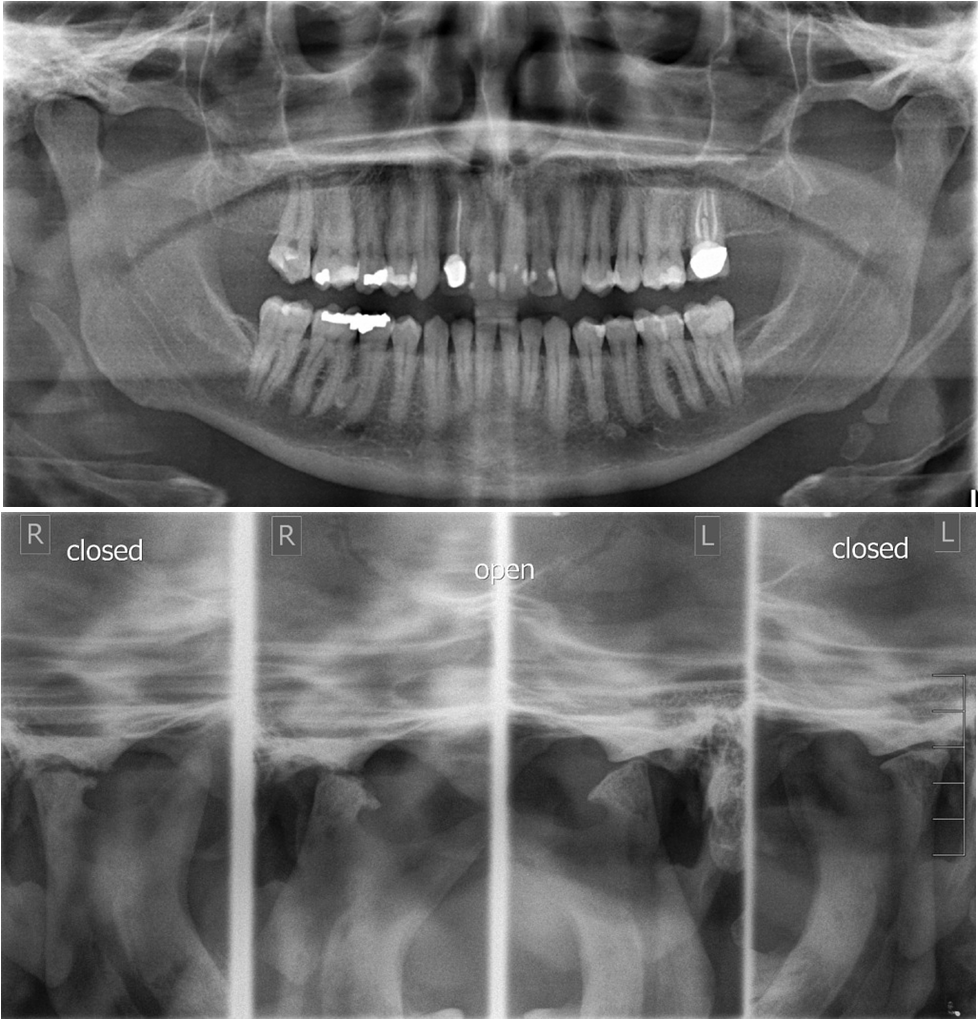
- CBCT scans. Cone beam computed tomography (CBCT) scans capture thousands of images of your teeth, jaws, facial bones and sinuses. These pictures are then stitched together for a detailed 3-D image. Dental CT scans give us a more detailed view of your facial anatomy.
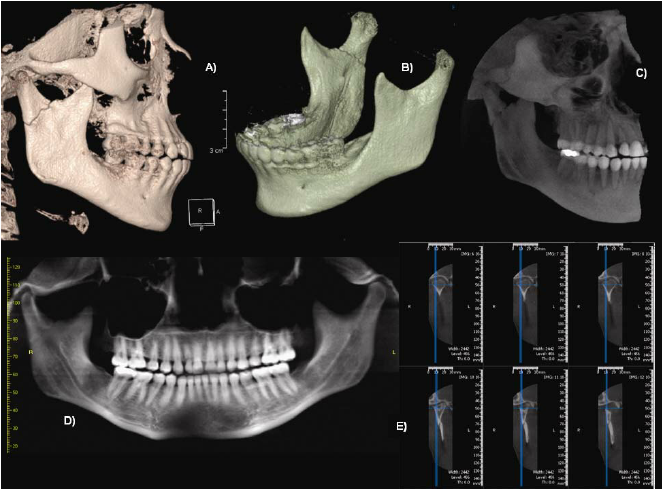
- MRI scans. In some cases, magnetic resonance imaging (MRI) may be used to view soft tissues in and around the jaw joints. These images show the position of the disk, inflammation and possible jaw locking. With this we come to know if your TMJ disc is functioning properly and in good condition.
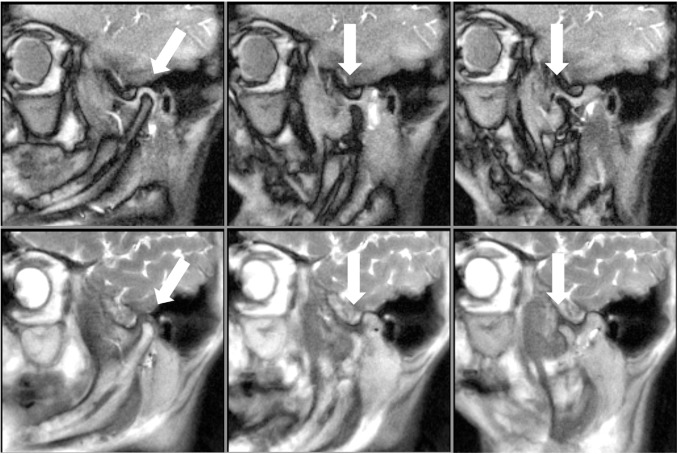
In case any abnormality is found our oral maxillofacial surgeon take care of your further treatment. Our oral maxillofacial surgeon specializes in treating skeletal conditions such as TMJ dysfunction.
TREATMENT
Treatments range from simple self-care practices and conservative treatments to injections and open surgery. Most experts agree that treatment should begin with conservative, nonsurgical therapies, with surgery left as the last resort. We’ll explore a variety of TMJ treatments in the sections below.
Nonsurgical TMJ treatments
If we diagnose you with any TMJ dysfunction, we will recommend conservative treatment options first. Many of these therapies can work in combination with one another to provide TMJ relief:
- Apply moist heat or cold packs. Apply an ice pack to the side of your face and temple area for about 10 minutes for acute pain. Do a few simple stretching exercises for your jaw (we will explain you the exercises). After exercising, apply a warm towel or washcloth to the side of your face for about five minutes. Do this a few times each day.
- Eat soft foods. To keep your jaw from working overtime, eat soft foods such as curd, mashed potatoes, Dal rice, soup, scrambled eggs, cooked fruits and vegetables, beans, and grains. Avoid hard and crunchy foods (like papad, panipuri, etc) and chewy foods (like chocolates & chewing gums).
- Take medications. To relieve pain and swelling, we prescribe you doses of NSAIDs or other drugs for pain such as narcotic analgesics. Muscle relaxants, especially for people who grind or clench their teeth, can help relax tight jaw muscles. Anti-anxiety drugs can help relieve stress, which is sometimes thought to worsen TMJ symptoms. A low dose of antidepressants can also help reduce or control pain. Muscle relaxants, anti-anxiety drugs, and antidepressants are available by prescription only.
- Wear a splint or night guard. Splints and night gaurds are mouthpieces that fit over your upper or lower teeth. When worn, the mouthpieces provide stable tooth contacts during closure. When worn, mouth guards also correct your bite by placing your jaw in a more favorable position. The main difference between splints and night guards is that night guards are only worn at night and splints are worn full time. We provide you appliance depending on your need.
- Undergo corrective dental treatments. These treatments include replacing missing teeth or using crowns, bridges or braces to bring your bite into proper balance and alignment.
- Avoid extreme jaw movements. For example:
- Keep yawning and chewing to a minimum.
- Don't rest your chin on your hand or hold the telephone between your shoulder and ear. Practice good posture to reduce neck and facial pain.
- Keep your teeth slightly apart as often as you can to relieve pressure on the jaw. To control clenching or grinding during the day, place your tongue on the palate behind your upper front teeth.
- Learn relaxation techniques to help control muscle tension in the jaw.
Other TMJ treatments
If conservative treatments are unsuccessful, we may suggest one or more of the following:
- Transcutaneous electrical nerve stimulation (TENS). This therapy uses low-level electrical currents to reduce pain by relaxing your jaw joint and facial muscles. TENS can be completed at home or your healthcare provider’s office.
- Ultrasound. This is a deep heat treatment that is applied to the TMJ to relieve soreness or improve joint movement.
- Trigger- point injections.Pain medication or anesthetic is injected into tender muscles of the face (called "trigger points") to relieve pain.
- Radio wave therapy. Radio waves create a low-level electrical stimulation to the joint, which increases blood flow and provides TMJ relief.
- Botulinum Toxin (Botox). These injections help reduce muscle mass and inflammation.
TMJ surgery
TMJ surgery should only be considered after all other treatment options have been tried and severe pain remains. While TMJ surgery is the best option for many people, it’s important to weigh your options and make an informed decision.
There are three types of TMJ surgery: arthrocentesis, arthroscopy and open-joint surgery. The type of surgery needed depends on the TMJ symptoms and the complexity of the problem.
- Arthrocentesis. This minor procedure is performed at Niramaya Multispeciality Dental Hospital only , usually under local anesthesia. It’s often recommended when the jaw suddenly locks in the closed position. It can also help reduce inflammation in the TMJ. Needles filled with sterile fluids are inserted into the affected joint and the joint is washed out. Occasionally, a surgical instrument is needed to remove scar tissue or to dislodge a disc that has moved out of place.
- Arthroscopy. This procedure is performed under general anesthesia. Oursurgeon makes a small incision in front of the ear and inserts a small, thin instrument that contains a lens and light. This instrument is hooked up to a video screen, which allows our surgeon to examine the TMJ and surrounding area. Depending on the cause of your TMJ pain, our surgeon may remove inflamed tissue or realign the disc or another area of the TMJ. Because arthroscopic surgery is performed through tiny incisions, there is less scarring, a shorter recovery time, less discomfort, and fewer complications compared with open-joint surgery.
- Open-joint surgery. If you undergo open-joint surgery, you'll be given general anesthesia. Unlike arthroscopy, open surgery is the traditional procedure in which a long incision is made to insert instruments. Open-joint surgeries may be necessary if:
- The bony structures that make up the jaw joint are wearing away.
- There are tumors in or around TMJ.
- There is severe scarring or bone chips in the joint.
Compared to arthrocentesis and arthroscopy, open-joint surgery results in a longer healing time plus has a greater chance of tissue scarring and nerve injury. Still, there are instances in which open-joint surgery is the best solution. We help you determine which approach is suitable for your unique needs.
Alternative TMJ treatments available
We recommend alternative therapies in combination with traditional treatments. These therapies may include:
- Relaxation techniques. Mindfulness or meditation can help you slow your breathing and relax tense muscles. As a result, pain can be reduced.
- Acupunture. This technique involves inserting thin needles into the body at various points. Acupressure points may trigger the central nervous system and stimulate your body’s natural healing processes.
- Biofeedback. Electronic instruments can be used to detect areas of stress and tightness in your body. This gives you a greater awareness of where you’re holding tension so you can focus on relaxing these muscles.
- Pain management referrals. In some cases, you may be referred to a pain psychologist or pain management clinic to help ease your symptoms.
PREVENTION
Some TMJ symptoms are caused by factors out of your control, such as the way your bite fits together. However, in some cases, you may be able to reduce the risk of TMJ dysfunction by:
- Practicing good posture.
- Wearing a night guard, especially if you clench or grind your teeth.
- Wearing a mouthguard when playing contact sports.
- Practicing relaxation and stress-reduction techniques.
FAQ:-
- When should I seek treatment for TMJ disorder?
If you experience common TMD symptoms such as jaw pain, difficulty opening your mouth or clicking and popping of the jaw, schedule a visit with us. You should also schedule an appointment if you grind or clench your teeth, as this can lead to TMJ dysfunction.
- Can TMJ disorder go away on its own?
In some cases, yes, but it depends on the cause. For example, if you’ve had a TMJ flare-up due to a temporary period of stress, your symptoms will likely subside once the stress is no longer a factor. However, if your TMJ pain is due to jaw misalignment or the way your teeth fit together, you will likely have chronic problems that will only improve with treatment.
- What happens if TMJ disorder is left untreated?
Left untreated, TMJ disorder can lead to significant health problems, including chronic pain and inflammation. It can also cause bite issues, tooth erosion and long-term conditions such as sleep apnea, insomnia, depression and anxiety.
- How do I permanently get rid of TMJ disorder?
With proper intervention, TMJ dysfunction can be successfully treated. The first step is seeing us at Niramaya Multispeciality Dental Hospital, Ujjain for an evaluation. It’s best to treat the condition early on before symptoms worsen.
Jaw pain may not seem like a big deal, especially if it comes and goes. However, left untreated, TMJ dysfunction can seriously hinder everyday functions like biting, chewing and speaking. If you think you may have TMJ symptoms, call us and schedule a consultation. Prompt treatment can help you manage the condition and improve your overall quality of life.
